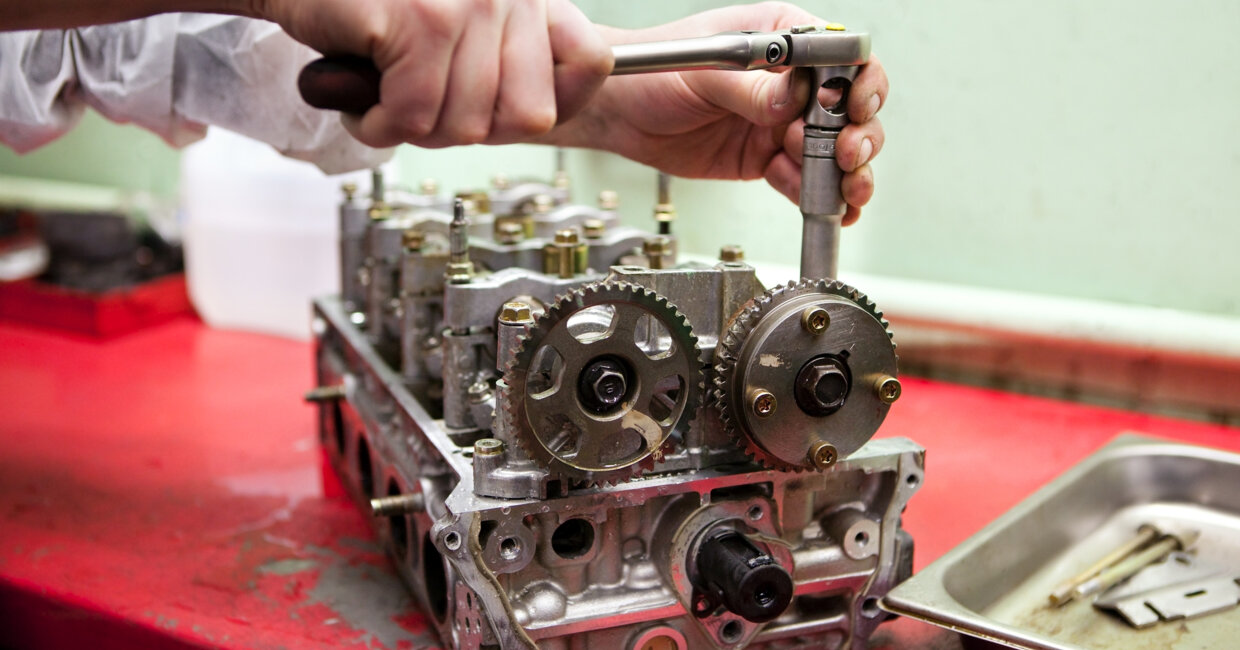
Refurbishment re-invigorates your fleet
Refurbishing your old machines brings significant savings in money and time while boosting the reliability and eco-efficiency of your overall operations.
All machines experience wear and tear and eventually break down. That is a given. The question is how to deal with it. Buying a new machine is one option. There are, however, other ways to extend the lifecycle of your equipment. Fredrik Fogelklou, VP, Parts & Lifecycle Solutions at Kalmar, says that the industry is now turning to refurbishment as an efficient and eco solution.
Fogelklou points out that all machines have a clock, so to speak, and that clock is ticking.
“At a certain point, they tend to become less reliable, and of course unreliable machines can have an impact on operational performance and eco-efficiency.”
Turn back time
What if you could reset the clock and give your aging machine a second life? This is a wholly viable approach using Kalmar’s refurbishment services, according to Fogelklou.
Fogelklou says that renewing old machines has always been part of Kalmar’s operations, but it is only recently that it has come into sharp focus.
“There isn’t a strong tradition of refurbishment in the industry, but that is now changing as it gains in popularity and becomes central to companies’ sustainability efforts.”
Steel matters
The case for refurbishment starts with steel which is the biggest contributor to CO2 emissions in manufacturing machines. From the mine to the foundry to the factory, producing steel is highly energy-intensive. The carbon footprint of each machine can no longer be ignored.
“Now imagine scrapping that quantity of steel as you decommission old machines and consider the steel needed to replace an old machine with a new one,” Fogelklou says.
“It is not a very sustainable practise and we can’t keep operating like this.”
Using the planet’s resources responsibly
The steel structures are usually the longest-lasting part of a machine. Studies show that steel, with few exceptions, lasts the entire lifetime of the machine.
“By going through the machine in detail, certifying the condition of the steel and refurbishing the other components, you can effectively reset the clock on the machine. At the same time, you improve the reliability of your operations, save money, and perhaps most importantly, you become a responsible user of the planet’s resources,” says Fogelklou.
Refurbishment is also a quite fast process when you consider the time it takes to order and receive a new machine. The normal wait time for delivery of a new machine is several months, but with refurbishment delivery comes at a fraction of that time.
Getting started
Just what type of refurbishment are we talking about, and can all equipment be reconditioned? Fogelklou replies that Kalmar has a network comprising its own workshops and its partners where Kalmar refurbishes equipment such as terminal tractors, forklifts and reachstackers.
“The first step is to do a detailed assessment of the condition of the machine. Based on that analysis, a plan will be put in place on what work is needed.”
According to Fogelklou, the challenge here is to identify what components can be switched out to have a real impact on the machine's reliability while at the same time focussing on economic and eco efficiency.
“This is a fine balance, but it helps when we can draw from the same knowledge that first built the machine years earlier,” he adds. After all, Kalmar has the original parts, drawings and renderings and the knowledge and expertise to put it all together.
“Kalmar knows Kalmar best.”
Know-how from leasing
In addition, Kalmar has lease agreements for their machines all across Europe which means that every year there are hundreds of Kalmar machines returning home, so to speak, as contracts expire. They are checked out, perhaps refurbished and then returned to the field.
“We have gained a wealth of knowledge from our lease operations which forms a solid foundation to carry out refurbishment and renewal of all types of machines.”
Personal care
Of course, not everything will be switched out. Sometimes just a light tune-up is sufficient to extend the lifecycle. The key here is Kalmar’s highly experienced professionals who know in depth just what the best course of action would be for your machine.
“After a Kalmar refurbishment, the machine will be fully ready for its second life of optimal performance,” Fogelklou assures.
What’s more, customers have really bought into the second life ideology. “It used to be that you refurbish your machine then sell it. Now, customers are interested in refurbishing the machine and keeping it operating. This is a new and very positive step in the industry.”
Related articles
Further reading
Subscribe and receive updates in your email
Unsere Veröffentlichungen abonnieren

